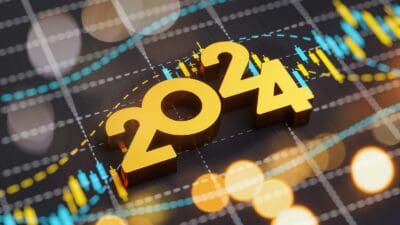I’ve never had much luck investing in mining companies. When I invested in Kazahkmys, the share price promptly fell through the floor, though I sold early enough to recover most of my investment.
This is why I have always treated mining companies with a certain circumspection. Warren Buffett has often said that you should only invest in what you understand. I can’t say I fully understand mining companies or, more specifically, how to value mining companies.
 I have written previously about the commodities supercycle. It looks like we are currently on the downslope of this supercycle. So should we avoid mining companies completely because of this?
I have written previously about the commodities supercycle. It looks like we are currently on the downslope of this supercycle. So should we avoid mining companies completely because of this?
In my article last month I said that this was not necessarily the case, particularly as companies such as Rio Tinto (LSE: RIO) (NYSE: RIO.US) and BHP Billiton (LSE: BLT) (NYSE: BBL.US) are more dependent on iron ore, whose price I thought was more stable than commodities such as copper.
As soon as I wrote the article, the iron ore price tumbled. This got me thinking that this is actually something I know very little about. So I decided to look further into this.
A long-term view of iron ore prices
What often surprises me is that when people talk about mining companies, there is no mention of the progression of minerals and metals prices over recent decades. I think this is crucial as it sets current commodities prices in a broader context.
In the year 2000 the iron ore price stood at just $12 per ton. Since the 1980s the price had been trading in a range between $10 and $15 per ton. But, about a decade ago, the price took off. By 2011 the iron ore price had reached $187 per ton.
That is an astonishing increase, unheard of previously. The boom in emerging markets, particularly China’s manufacturing and infrastructure boom, combined with a flood of money out of shares and into commodities, led to surging commodities prices. Not surprisingly, mining company profits, and their share prices, have also surged. Over the space of a decade Rio Tinto’s share price increased 7-fold.
My contrarian antennae are telling me to be cautious
This gives us some perspective about current commodity prices. Although the iron ore price has fallen, it could fall a lot further. Although the share price of mining companies has fallen, there is a risk they could fall a lot further.
I suspect that the commodities supercycle is gradually ending, and that mining company shares are thus, long-term, on a downward trend. Gradually we will see money flow from commodities to equities. This is why my contrarian antennae are telling me to be cautious with mining companies. Certainly at the moment, I am not a buyer.







